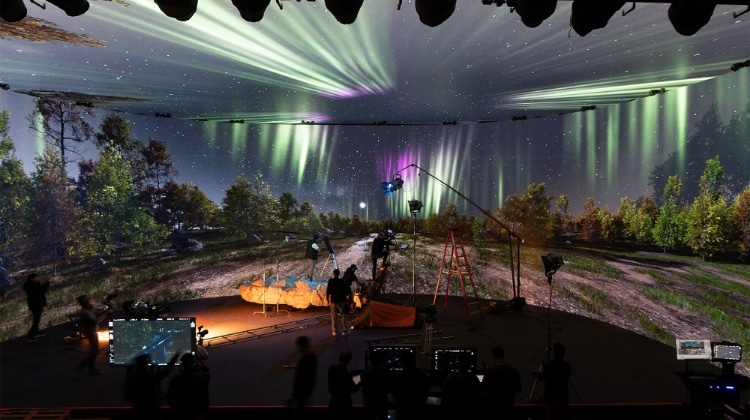
Environmental considerations in
content production
Under its Road to Zero global environmental plan, Sony aims to reduce the environmental impact of its business activities and
products over their lifecycles to zero. Sony's Virtual Production technology and equipment contribute to reducing the environmental
impact of content production, such as CO2 emissions and resource usage.
Content production with less
environmental impact
What is Virtual Production?
Virtual Production is a content production technology that combines 3DCG (three-dimensional computer graphics) and live action,
shooting real people and real sets in front of virtual backgrounds displayed in the studio. This boosts freedom of creative expression
by removing constraints on place (having to travel to the location) and time (of day or season), and reducing post-processing
workload.
- Sony's technology
With high-resolution Crystal LED for display, and high-image-quality CineAlta cameras for capture, plus the Virtual Production Tool Set that links the LED background and the shot video, Sony's technology can create stunningly realistic Virtual Production footage.
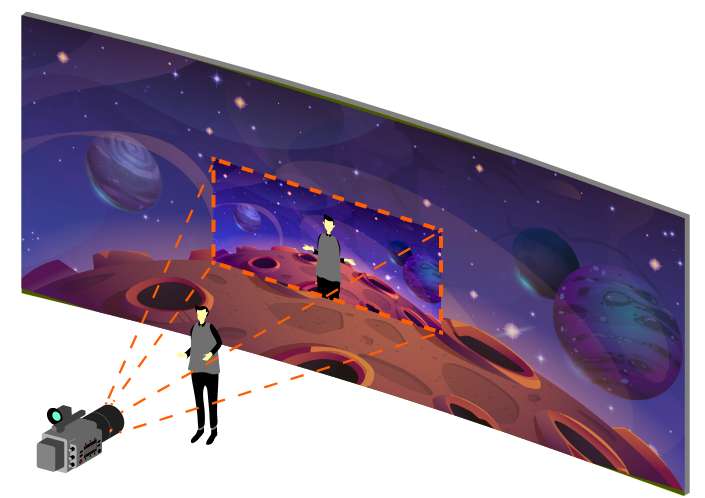
Reducing the CO2 emissions from
content production
Sources of CO2 emissions in content production include on-site fuel consumption by power generation and heating, fuel consumption from transportation of personnel and equipment to the location(s), electricity consumption, and CO2 produced via hotel accommodation and waste disposal.
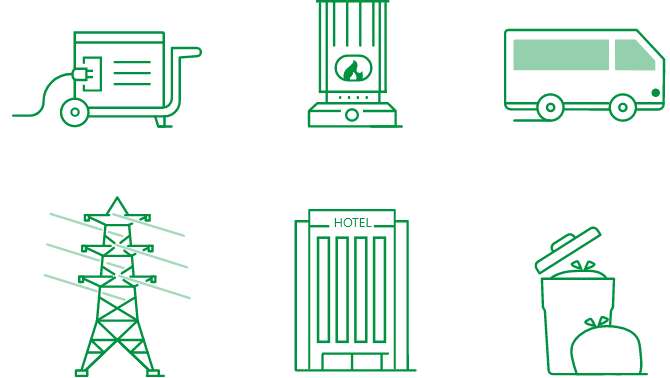
- Differences between location shooting
and Virtual Production On-location shooting consumes a large amount of fuel that generates CO2. By comparison, while Virtual Production shooting produces some CO2 due to the electricity consumption of the sound stage, LED panels and rendering equipment, it consumes less fuel on location and for transportation. Sony Pictures Entertainment calculates that Virtual Production shooting can reduce CO2 emissions by approximately 52% compared to on-location shooting (assuming that no renewable energy is used).

Environmental considerations
with equipment
Sony's Virtual Production equipment
reduces environmental footprint
The Virtual Production shooting equipment produced by Sony is designed with environmental impact in mind, including energy-
saving LED panels and the reduced resource consumption of camera equipment.
- Energy conservation with Crystal LED
The combination of high-efficiency ultra-fine LED chips and Sony's power control technology delivers low power consumption. The Crystal LED VERONA ZRD-VP15EB improves energy efficiency per unit luminance*1 by approximately 27% over the B series ZRD-B15A.
*1 Energy efficiency per unit luminance is related to the power required to produce a certain luminance. It is calculated per unit luminance at maximum luminance.
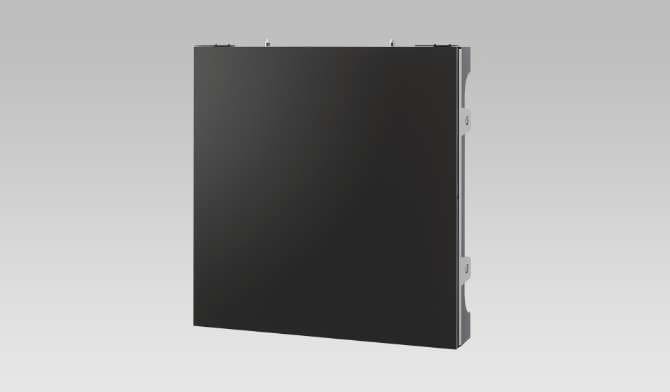
- The compact and lightweight
VENICE 2 The AXS-R7 portable memory recorder was required by VENICE as a separate unit, but now VENICE 2 incorporates its functions into the main unit, which is smaller and about 15% lighter than the VENICE + AXS-R7 combination.
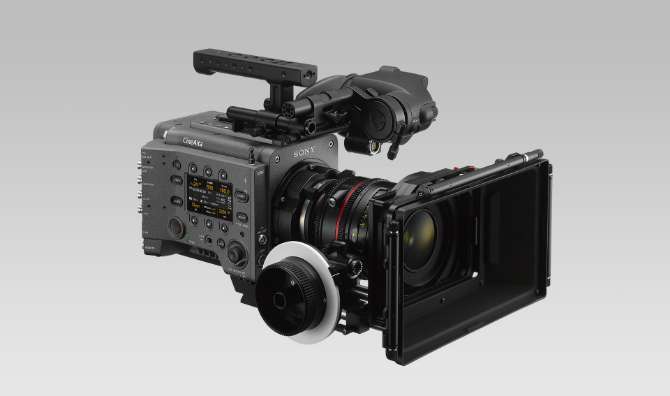
Interview
- Nicole Franco
- Executive Director, Creative Strategy & Operations
Sony Innovation Studios | Sony Pictures Entertainment

The process of movie production can present environmental challenges, such as fuel usage for travel, consumption of electricity during and after production, waste generation from props, and construction and dressing of physical sets. More than half of the carbon footprint comes from travelling to different locations for scouting and shooting scenes. However, Virtual Production using LED walls allows for more efficient movie making processes while reducing the environmental impact of production. It enables creatives to tell stories from anywhere in the world, all from one stage. LED walls can be powered by renewable energy sources, reducing greenhouse gases. Real-world locations can be captured and converted into virtual environments, eliminating the need to travel to different locations with a large crew, resulting in a significant reduction in carbon footprint. Additionally, virtual environments can reduce the need for physical props and set builds, and can be reused. By harnessing the power of technology and innovation, movie makers can contribute to protecting our planet for future generations while entertaining audiences.

